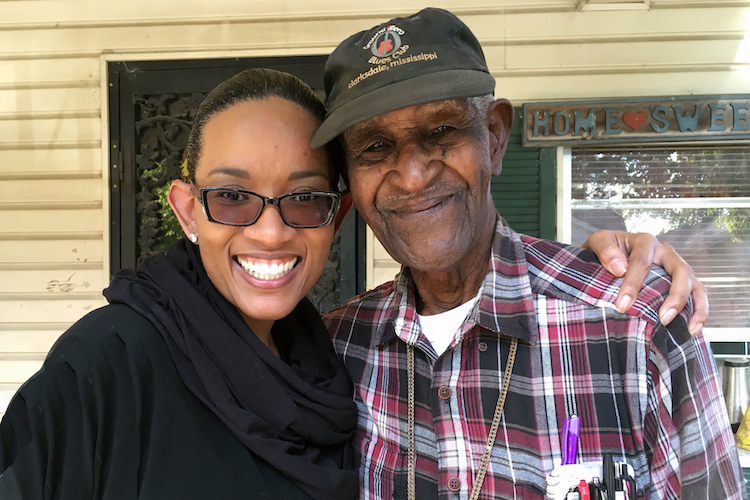How did AAL develop?

For some varieties of language, there are ample historical documents that help in reconstructing the history of the variety, but the origin of African American Language (AAL) is less well known and has been debated for quite some time, due in part to a lack of historical records. The origin and development of AAL can be summarized through three main historical arguments or “hypotheses”: the Creole Hypothesis, the English Origins Hypothesis, and the Substrate Hypothesis. These three theories have developed out of the research of scholars over the last 50 years. These three main theories each have their merits, as well as their drawbacks.
The Creole Hypothesis argues that vernacular AAL developed from a creolized language originally spoken by enslaved Africans (Rickford 2015). Creole languages are ‘new varieties of language generated in situations of language contact’ (Rickford and McWhorter 1997: 238) whereby the vocabulary of one language is superimposed on adapted grammatical structures of another language. The earliest and strongest Creole Hypothesis argues that AAL developed from a creole language that arose out of early contact between Africans and Europeans, resulting in a widespread creole in the antebellum South which later went through a process of decreolization (Stewart 1967; Dillard 1972). Later perspectives of the Creole Hypothesis tend to describe creole ‘influences’ rather than widespread creole, acknowledging the variation in early AAL (Rickford 2015, see The Substrate Hypothesis below).
There are several sources of evidence that support the creole origins of AAL. Similarities with other well-known creole varieties and West African Languages, as well as grammatical patterns not found in White English varieties, all lend credence to the Creole Hypothesis (Rickford 1998, 2015). Specifically, AAL historically shows connections to other creole varieties outside of the mainland American South including Gullah and other creoles found in Jamaica and Barbados (Rickford 2015). Gullah provides strong evidence for the Creole Hypothesis, because it developed along the coast of South Carolina where many enslaved Africans resided on plantations and its status as a creole is largely agreed upon. Features of vernacular AAL are shared with Gullah, which provides support that modern vernacular AAL may have developed from an ancestral creole language.
In addition to these connections, some grammatical patterns in AAL are argued as evidence for early creole origins. In particular, copula absence has been one of the most well studied structures of AAL and has been crucial in development and continued argumentation for the Creole Hypothesis (see Rickford 1998, 2015). Copula absence is the process whereby forms of the copular verb be are absent in second and third person contexts (i.e. He is nice --> He nice; see Linguistic Patterns). Copula absence in AAL is not shared with any English varieties, historically or contemporarily, but can be found in other well-known creole languages and largely follow the same grammatical constraints (Rickford 2015). Other features such as third person singular –s absence and possessive –s absence (Michael runs --> Michael run; My grandmother’s house --> My grandmother house), and the tense and aspect system, are also argued as evidence for the Creole Hypothesis (Rickford 2015).
The video below, produced by the Language and Life Project and is an excerpt from the 2017 documentary Talking Black in America, Dr. Emory Campbell discusses being a Gullah native and the shared language and culture of Gullah and Sierra Leone.
The English Origins Hypothesis
The English Origins Hypothesis (EOH), as we define it, is most similar to what has been called the Neo-Anglicist Hypothesis (Poplack 2000; Poplack and Tagliamonte 2001; Van Herk 2015; Wolfram and Schilling 2016). For example, Poplack suggests that "AAVE originated as English, but as the African American community solidified, it innovated specific features" and that "contemporary AAVE is the result of evolution, by its own unique, internal logic." This differs from the original Anglicist Hypothesis (Kurath 1949; McDavid and McDavid 1951), which suggested that after enslaved Africans were brought to the U.S., they learned English once they were exposed to it, following a similar pattern of immigrants in the U.S. The suggested that the speech of African Americans in the mid-twentieth century differed little from that of local white varieties. Where they differ is that Neo-Anglicists suggest that AAL has diverged from contemporary European American speech in the mid to late twentieth century. Here, we use EOH to refer to the hypothesized English origins of AAL and not about the divergence in the twentieth century.
The evidence of the EOH is largely based on historical comparisons of early British varieties and early African (American) speech in the Voices of Slavery recordings from the Library of Congress (Bailey et al. 1991) and recordings from diaspora communities (e.g., Samaná in the Dominican Republic). These studies suggest that earlier varieties of AAL exhibited morphosyntactic patterns similar to neighboring European American Varieties, more than a strong Creolist position allows (Mufwene 2015). Early records indicate that British varieties share some features with vernacular AAL including, for example, an absence of tense marking (e.g. He arrive yesterday), and possessive -s absence (e.g. My grandmother house; Mufwene 2014). While, other features of modern AAL, such as stressed BIN, and unstressed done (see Linguistic Patterns for more), are innovations of the twentieth century (Labov 1998; Wolfram and Schilling 2016).
In addition to the morphosyntactic distributions, research has argued that the sociohistorical context of slavery in the South does not provide adequate conditions for the evolution of a creolized language, which arguably requires large populations to see the effects of language contact. Proponents of the EOH argue that the notion of a plantation-wide African American Creole is tenuous at best since the majority of enslaved African Americans lived on smaller family farms, rather than on massive plantations with large enslaved populations (Mufwene 2014). Additionally, Mufwene (2014) argues that different local ecological conditions, such as the nature of the plantation (e.g. tobacco and cotton vs. cane sugar) and location. These differences ultimately provided different population demographics and variable degrees of segregation with white people which lead to the development of different colonial varieties, rather than widespread creole throughout the South.
Debates between the Creole Hypothesis and English Origins Hypothesis provide insights into the development of AAL, and each side provides some strong evidence for the origins. The disputes largely remain with conflicting positions on the nature of the sociohistorical circumstances that gave rise to modern AAL. More recently, scholars have suggested a new theory, The Substrate Hypothesis, that provides a more middle-ground approach to the strict Creole Hypothesis and English Origins Hypothesis.
The Substrate Hypothesis suggests that a “full-fledged” Creole may never have developed, but instead a substrate influence arose out of contact between African languages, Creoles, and English (Wolfram and Thomas 2002; Wolfram 2003). These durable and persistent features from non-English source languages may be subtle but provides evidence for persistent differences between the speech of African Americans from regional European American counterparts. As Wolfram and Schilling (2016: 231) note, “though recent research evidence suggests more regional influence from English speakers than assumed under the creolist hypothesis, and more durable effects from early language contact situations than assumed under the English Origin Hypothesis, we must be careful about assuming that we have the final answer.”
Due to limitations of data and different sociohistorical conditions for speakers of AAL, we may never know everything about the origins and early development of AAL. Ultimately, these theories and positions highlight both the linguistic and social complexities that have always been present in the development of AAL in the United States.
Related to the origins and development of African American Language, is the Convergence/Divergence debate, which is concerned with whether or not African American and European American varieties are become more similar (converging) or becoming less similar (diverging) over time. This question is quite complex and hasn’t been resolved. For a summary of arguments, please see Are Black and White Vernaculars Diverging? (Fasold et al. 1987). A complicating factor in this debate is that though AAL most definitely is rooted in the American South, its continued development and emergence as a distinct ethnic variety is “strongly associated with its use in large metropolitan areas throughout the United States” (Wolfram and Schilling 2016: 231). This fact is a result of large population movements (The Great Migration), segregation, as well as cultural identity.
The Great Migration was the movement of large groups of African Americans left the rural south in the mid-twentieth century for urban centers in the north, west, as well as the urban south. In turn, this population movement resulted in a social environment where an ethnolinguistic variety could emerge, due to the systematic segregation (both de jure and de facto) and isolation from other ethnicities. Further, these social factors led to a language variety that had a different relationship to geographic region, unlike most other language varieties in the United States. This led linguists to discuss AAL as a supraregional language variety. There were traits and features of AAL that are shared throughout the United States (Wolfram 2007). Though this is somewhat of a simplification, as we know that AAL exhibits regional differences, there are features of AAL that cross regional boundaries where European American varieties do not (Wolfram and Schilling 2016).
A potentially more important factor in the continued development of AAL is cultural identity and heritage. African Americans have for quite some time had a very strong sense of culture and heritage, with language being a key factor (just like any other cultural/ethnic group), and have fostered this identity with pride. African American culture and cultural practices have had a tremendous impact on youth culture, American popular culture in general, and even global culture, with language being a key factor for this influence (Smitherman 1977). All of these points are to say that AAL is more than just a set of pronunciation and grammatical features, with AAL being emblematic of cultural and identity, as “the soul of ethnolinguistic variation does not, in fact, reside in the structural features of the language variety but in how it is used—that is its functional traits” (Wolfram and Schilling 2016: 239). Though there has been a great deal discovered about the language of African Americans, its possible origins and continued development, there is still much left to be understood about this language.
References

